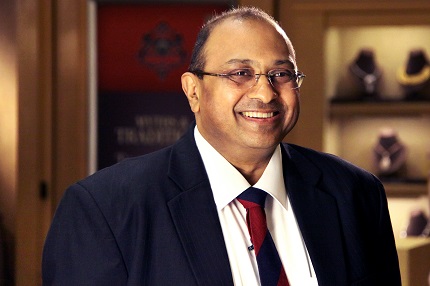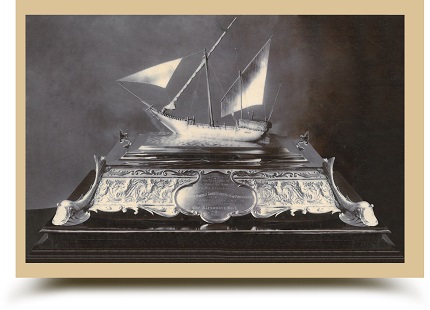Hayagriv talks to Vijetha Rangabashyam about this book that is an ode to his heritage brand CKC, south Indian jewellery craftsmanship, the inspiration that went behind this book, honouring and respecting jewellery craftsmen and more

From Alexander the Great's visit to India in search of gold and diamonds: ancient Vedic wisdom on gold: the prevalence of bead-making in India 10,000 years ago; and the emergence of Goa as the world's biggest jewel trading centre in the 16th - 17th centuries and right up to using the great artist Raja Ravi Verma's paintings as a source of information on jewellery styles prevalent in his era... the book covers it all. Bejwelled Past is a treasure house of information on the ‘bejewelled past’ of not only one of India’s most successful jewellery house, but also on our nation’s rich heritage and skill in jewellery making. We speak to Dr. C Vinod Hayagriv, Director & Managing Director, C. Krishniah Chetty Group of Jewellers about the inspiration behind this book, the research that went into it, some interesting discoveries and anecdotes while doing the groundwork for the book and more.

1.What inspired you to come out with a book on South Indian jewellery and its history?
It’s been a long-standing desire of mine to document the history of one of India’s oldest and South India’s oldest jewellery firms. As part of the 5th generation in the business, having entered into the family business in 1975-76, at the age of 16, the bug caught me in this fascinating trade of beads and jewels.
As time went by, the desire grew. Europe and Russia in particular had iconic jewellery firms, many perished, and few survive to this day. That was a ticker in my mind, to study what made C. Krishniah Chetty survive over a century (in 1969) sesquicentennial year now.
My craftsmen working with us were the inspiration. They were rather brusque, but highly talented. They worked their entire life with us. What made them work so long and devote their life with us and how did they learn and so on were thoughts I wished to learn. Writing a book therefore was a natural outcome.
However, taking a step forward was in the year 2000, when I requested a friend and a highly respected authority in Indian culture and jewellery Dr.Usha Balakrishna to come and deliver a lecture to a select set of friends and clients on the subject. She was so captivating that the 500 or so members in the audience sat in rapt silence to listen to her.
After the lecture, she began to speak to me and the seed of the book idea germinated.
2. How did you approach the research and writing process for this book?
The subject was thrilling. I first delved into our history, our records, or diaries, documents and designs to see why they were there. Then we worked on how we can build the thread to make an interesting read for someone and everyone. The author Dr.Balakrishnan wrote about 180 pages. With time we put together images, and I wrote another 120 pages. As the time taken was more than I anticipated, it was also a blessing as I had more time to think about various aspects of how to make the content rich.
Every document, every property document, every chat with old clients and every discussion with family brought more information. That became what I call as the first edition of the Bejewelled Past!
3.What was the most challenging part of compiling this book?
Only time. Time and energy both. Someone like me, who needs a zero-error outcome needs time and patience to think, research and put things together. But I had a patient team who helped me. And I had a support staff that included graphic designers, proof readers, editor and photographers, most of them who have been working with us for decades. I also had the support of my family, especially my wife.
4. Can you discuss any interesting or unexpected discoveries you made while researching for this book?
Several! One amazing discovery led to another. A few are: How the firm made a ship for the inauguration of the Alexandra Dock in Mumbai, which is till date amongst the major posts of the world, carved out of the sea, and now is the Ballard Estate. The design of the ship on a wooden plinth was exquisite with the engraving of the name of Lord Hardinge of Penhurst. The story of how my grandfather Cotha Venkatachalapathy Chetty designed a stamp to commemorate the first airmail service between Lahore and London. Discovering the names of the jury and how his design was ranked and is now in the records of the India Office in London.

5. In today’s time of technology, automation and AI, where do you think the sanctity and the importance of jewellery craftsmanship is today? Do you believe it’s getting its due?
I see it as an opportunity to be reinspired. India’s rich culture is shown in the book highlighting the styles of 1200 years from 600 to 1800 AD. This is itself a study that can bring in revitalised concepts. Handcrafting is integral to jewellery crafting. Machines, 3D printing, casting, computer aided designing and surface finishing techniques will all help make things faster, but the final finish is still handcrafting and is indispensable. I think that will not go out from fine jewellery where high value will be recognised. Mass design is another matter!
6. As a fraternity, what can jewellers do to safeguard these prized forms of craftsmanship and of course the artisans?
Respect. Respect craftsmen. Train them. Give them all the facilities we would give a person in a white or blue collar job. Skill is more valuable than a desk job.
7.What is your favourite form of south Indian jewellery craftsmanship and why?
In my preference, it will be high finished recreations of the past, with a modern touch. Easier said than done. But I am of the opinion that jewellery should have rich stories in them. For example, we just unveiled Anuraksha Collection of 18 pieces which embodies fabulous stories from the Indian mythology. These are 18 unique copyrighted pendants.
Be the first to comment